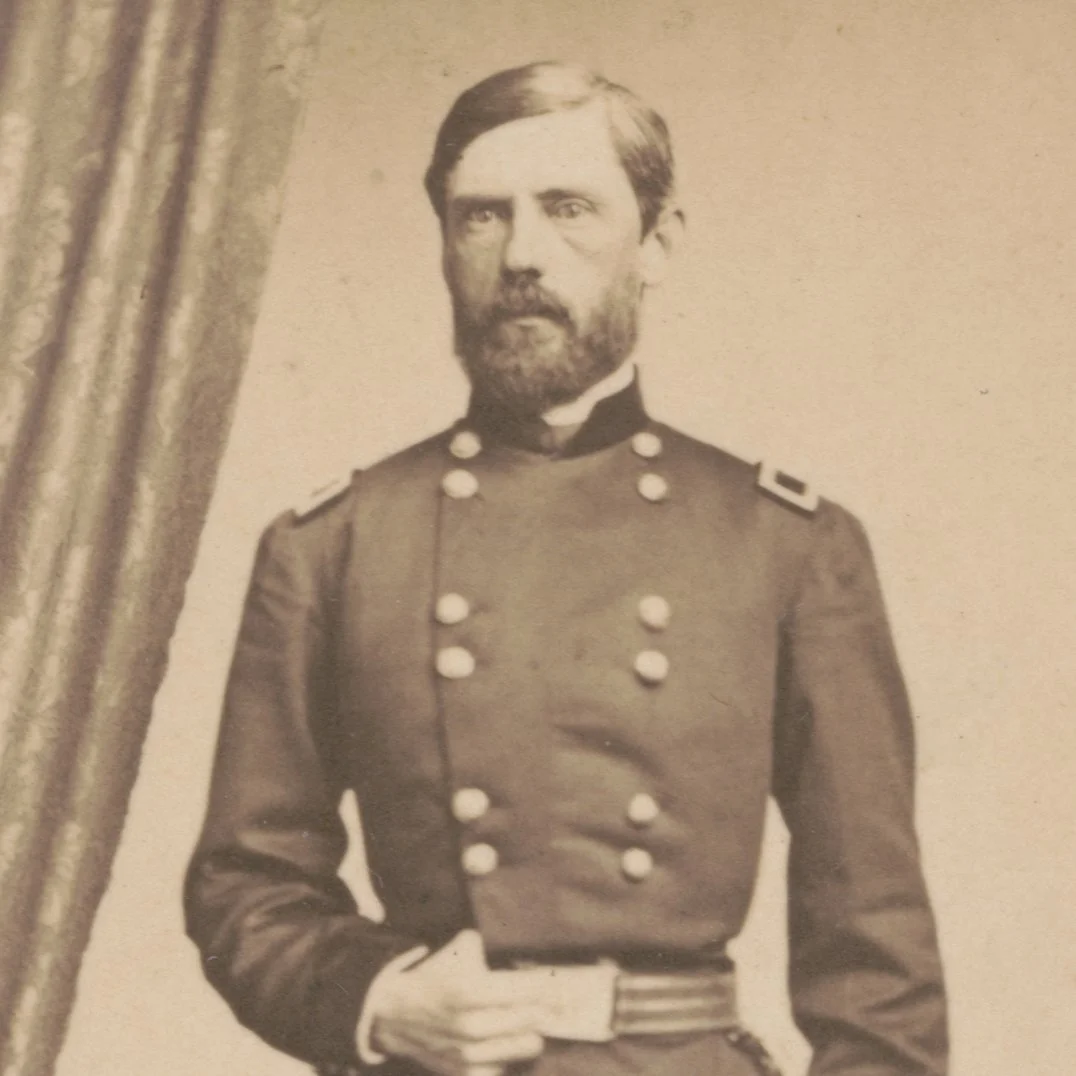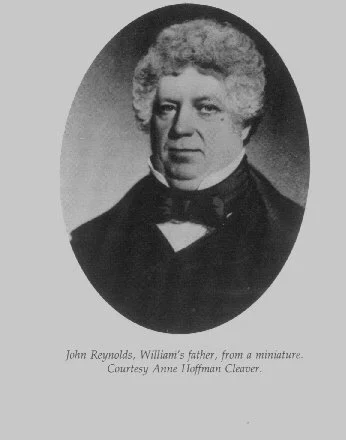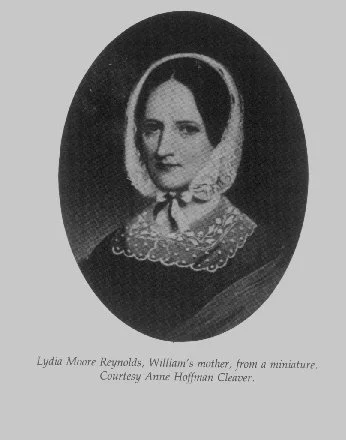-

Maj. Gen. John F. Reynolds
John Fulton Reynolds was born on September 20, 1820, in Lancaster, Pennsylvania. He was one of eleven children. In 1837, he was nominated to the United States Military Academy at West Point by future President James Buchanan, a friend of Reynolds’s father.
During the Mexican War, Reynolds, by then a 1st lieutenant, served under General Zachary Taylor. He was brevetted twice for gallantry.
On August 20, 1861, he was appointed brigadier general of volunteers in the Union Army and put in command of one of the brigades of the Pennsylvania Reserves.
On the morning of July 1, 1863, as he was leading his forces towards Gettysburg, Pennsylvania, Reynolds received a message that Confederate forces were almost there as well. Reynolds led his First Corps to McPherson Ridge, when he received a bullet through the neck. Reynolds died instantly. He was the highest ranking soldier on either side killed at Gettysburg.
Photo Credit: Library of Congress, Prints & Photographs Division, LC-DIG-ppmsca-40576
-

Rear Admiral William Reynolds
William Reynolds was a rear admiral in the United States Navy who served during the American Civil War. He is the older brother of John F. Reynolds.
From 1838 to 1842, he served with the US Exploring Expedition, and was among the first to sight the Antarctic mainland. In 1862, he was promoted to commander and given his first ship, the Vermont, a receiving ship at Port Royal, South Carolina.
In 1865, Reynolds was promoted to captain and given command of the screw sloop Lackawanna after the American Civil War, and assigned to the Pacific. In 1867, he was the officer to formally claim the Midway Atoll for the United States, after its discovery by a sealing ship in 1859.
In 1870, he was made a commodore and the Chief of the Bureau of Equipment. In 1873, he was promoted to rear admiral and given command of the Asiatic Squadron from his flagship, the steam frigate Tennessee.
Reynolds served as the acting Secretary of the United States Navy in 1874.
-

Captain Henry D. Landis
Answering the Commonwealth’s call to raise troops to meet the Army of Northern Virginia’s invasion in June 1863, Landis organized Landis’ Independent Battery (Philadelphia Battery), a militia battery of 87 men aligned with the Pennsylvania Light Artillery. The battery mustered into service on June 27, 1863, and served until mustering out on July 30.
Captain Landis’ battery took an active role in the Battle of Sporting Hill in Cumberland County where the soldiers silenced the Confederate guns on the evening of June 30. At Carlisle on July 1 the battery traded shots with enemy artillery.
According to his obituary, in 1865, Landis enlisted in Company C of the 215th Pennsylvania Volunteer Infantry. He served as a private until the unit mustered out on July 31, 1865.
Photo credit: "Henry D. Landis, detail," House Divided: The Civil War Research Engine at Dickinson College, https://hd.housedivided.dickinson.edu/node/40153.
-

John Reynolds
John Reynolds was the father of John F. Reynolds, William Reynolds and seven other children. He was, for many years, editor of the Lancaster Journal before it became consolidated with the Intelligencer. After his retirement from editorial work, he was chosen guardian of the children of Thomas B. Coleman and assumed charge of the famous Coleman Iron Works at Cornwall, Lebanon County, until 1847.
He was a member of the Legislature from Lancaster in 1822 and 1823. He died at Baltimore on May 11, 1853.
-

Lydia Moore Reynolds
Lydia Reynolds was the wife of John Reynolds and mother to John F. Reynolds, William Reynolds, and seven other children.
Per her obituary, she was the daugher of Captain Samuel Moore, of the Pennsylvania Line, in the army of the Revolution.
She was said to possess personal and mental attractions of no ordinary nature and her life was adorned by the exercise of all the mild and amiable virtues that dignify and embellish the female character.
The monument to her virtues and her memory will be found in the hearts of her family and her friends.
-

Lydia Moore Reynolds Evans
The eldest daughter of John and Lydia Reynaolds and sister to Maj. General John F. Reynolds and Rear Admiral William Reynolds. Lydia married Nathan Evans, a prominent businessman in iron manufacturing.
The mother of four chldren, she lived until her 80th year, passing away in Fort Wayne, Indiana.
-
Major Samuel M. Reynolds
The eldest son of John and Lydia Reynolds, Samuel served as Paymaster of US Volunteers during the Civil War and was breveted for his faithful and meritorious service as Lieutenant Colonel US Volunteers, and mustered out in March 1886.
He was in charge, for many years, at Castle Finn Forge and also at Lucinda Furnace—owned by James Buchanan. After the war he was appointed to a position in the US Custom House in Philadelphia, where he was still employed at the time of his passing.
He was the last male survivior of his family.
-
James Lefevre Reynolds
The son of John and Lydia Reynolds, and brother to Maj. Gen. John F. Reynolds and Rear Admiral William Reynolds. James studied law and was first admitted to the bar in Lebanon County, PA.
He was admitted to the bar in Lancaster County in 1844, where he practiced law for 10 years before retiring. With the outbreak of the Civil War, James was made superintendent of the draft in Lancaster County and later promoted to Quatermaster General of the militia.
After the war, he was a delegate to the Pennsylvania Constitutional Convention of 1873.